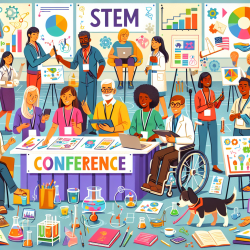Introduction
In the dynamic world of STEM, conferences are crucial for sharing research, networking, and fostering collaborations. However, they can sometimes be unwelcoming spaces for many attendees. A recent study titled Moving towards More Diverse and Welcoming Conference Spaces: Data-Driven Perspectives from Biology Education Research Scholars sheds light on how we can make these events more inclusive and equitable.
The Importance of Diversity and Inclusion
Conferences should be spaces where everyone feels welcome and valued. The study highlights that while diversity and inclusion (DEI) have been discussed for decades, there's still a significant gap in representation at STEM conferences. The National Science Foundation reports that minoritized groups are underrepresented in STEM fields, which is mirrored in conference demographics.
Key Findings from the SABER West 2021 Conference
The SABER West 2021 conference served as a case study for understanding inclusivity in STEM events. Attendees completed a climate survey, revealing several barriers and challenges:
- Discriminatory Behavior: 84% of participants observed or experienced discrimination.
- Logistical Barriers: Cost and timing of conferences were significant barriers.
- Accessibility Issues: Venues often lack accommodations for individuals with disabilities.
- Deficit Thinking: Presentations often focused on deficits rather than strengths of minoritized groups.
- Mental Health Concerns: Conferences can be stressful, impacting attendees' mental health.
Practical Steps for Improvement
Based on these findings, here are some actionable steps to create more inclusive conference environments:
- Intentional Inclusivity: Adopt practices from successful organizations like SACNAS, which prioritize BIPOC voices and create safe spaces.
- Virtual Access: Offer online options to broaden participation and reduce logistical barriers.
- Financial Support: Provide scholarships or travel awards to alleviate cost burdens.
- Accessibility Enhancements: Ensure venues are accessible and provide necessary accommodations, such as sign language interpreters and closed captioning.
- Mental Health Support: Incorporate downtime and quiet spaces in the conference schedule to support mental well-being.
Conclusion
Creating inclusive and welcoming conference spaces is not just about representation but ensuring that all voices are heard and valued. By implementing these strategies, we can foster a more equitable environment that supports the growth and success of all attendees.
To read the original research paper, please follow this link: Moving towards More Diverse and Welcoming Conference Spaces: Data-Driven Perspectives from Biology Education Research Scholars.










